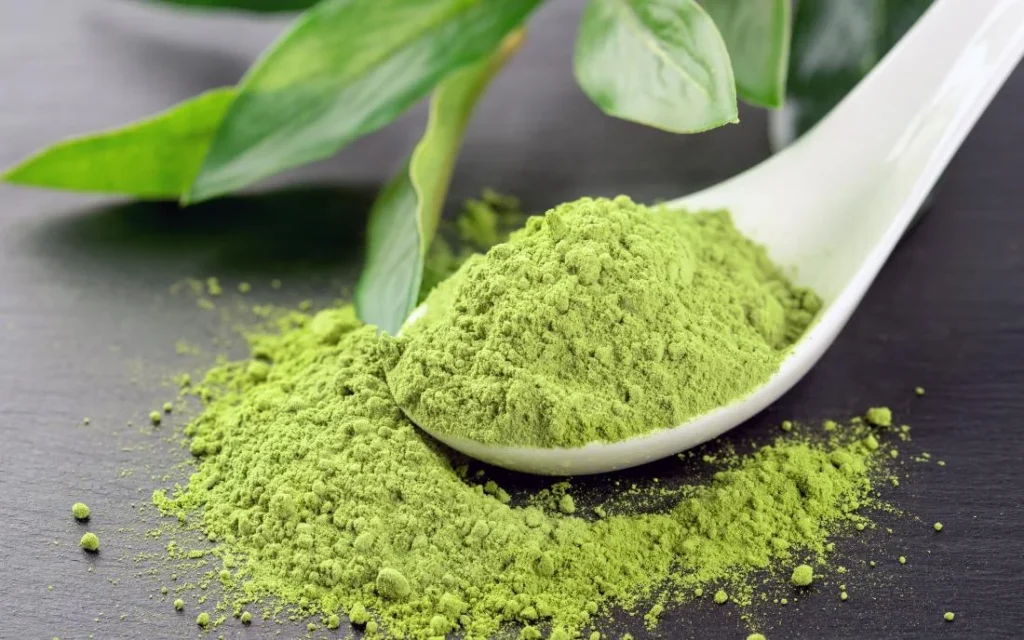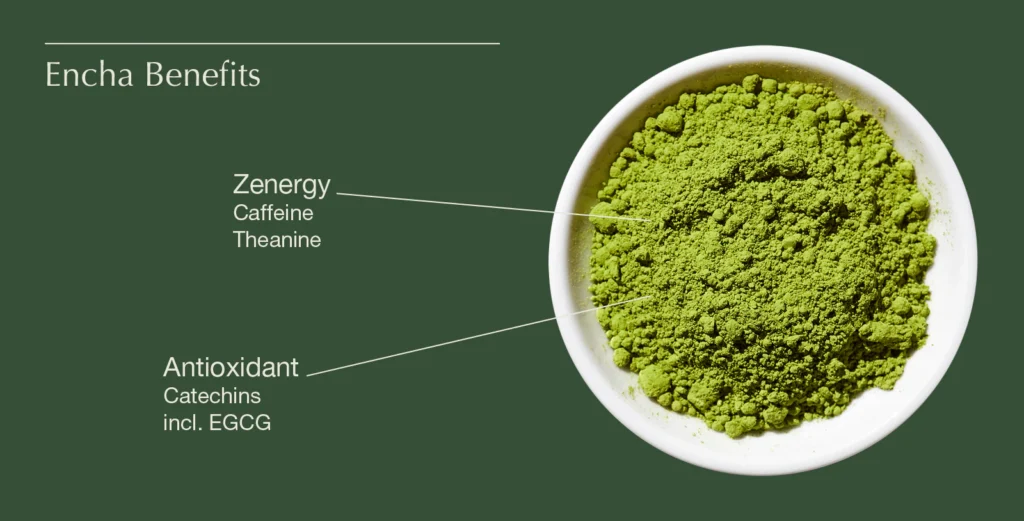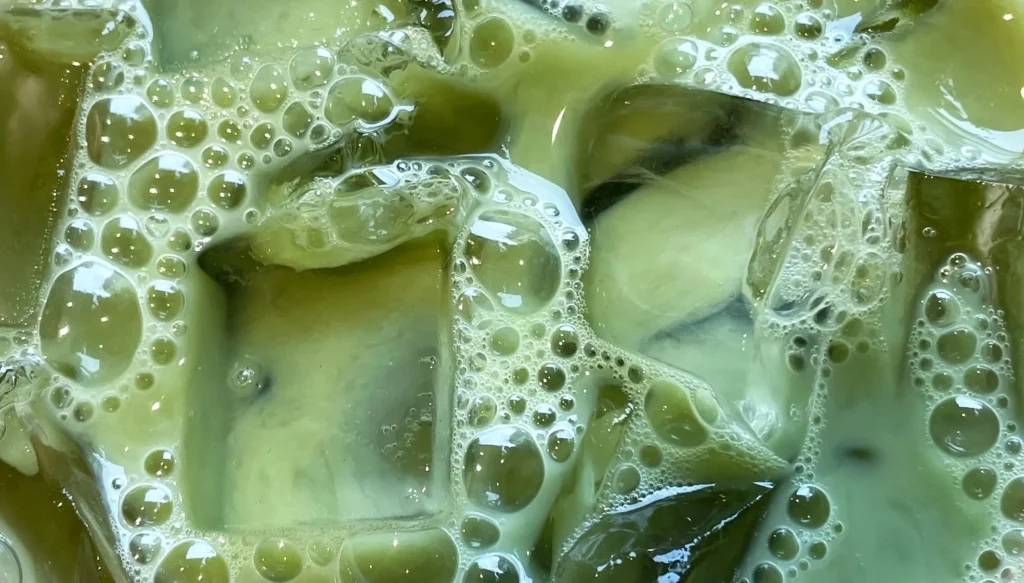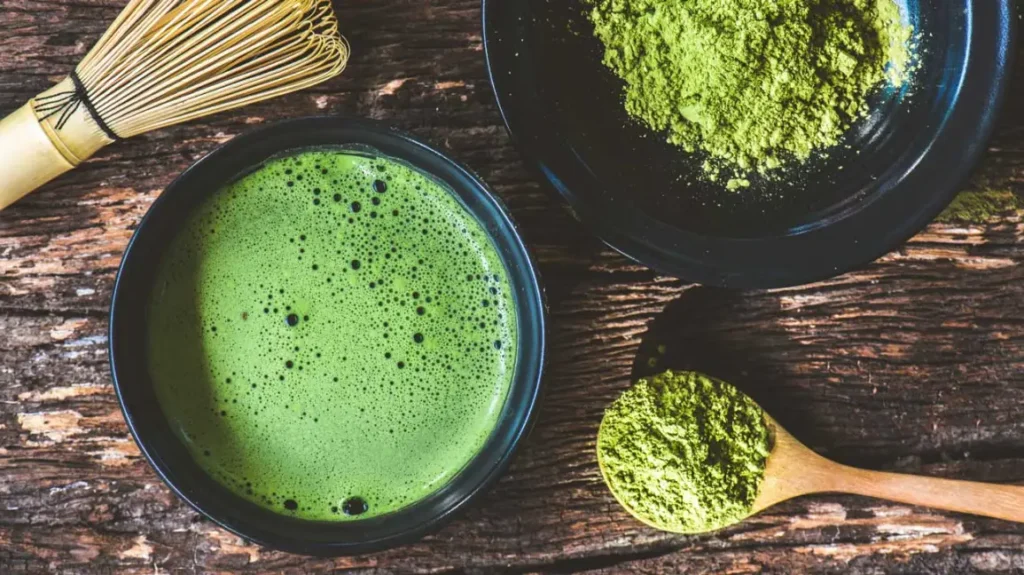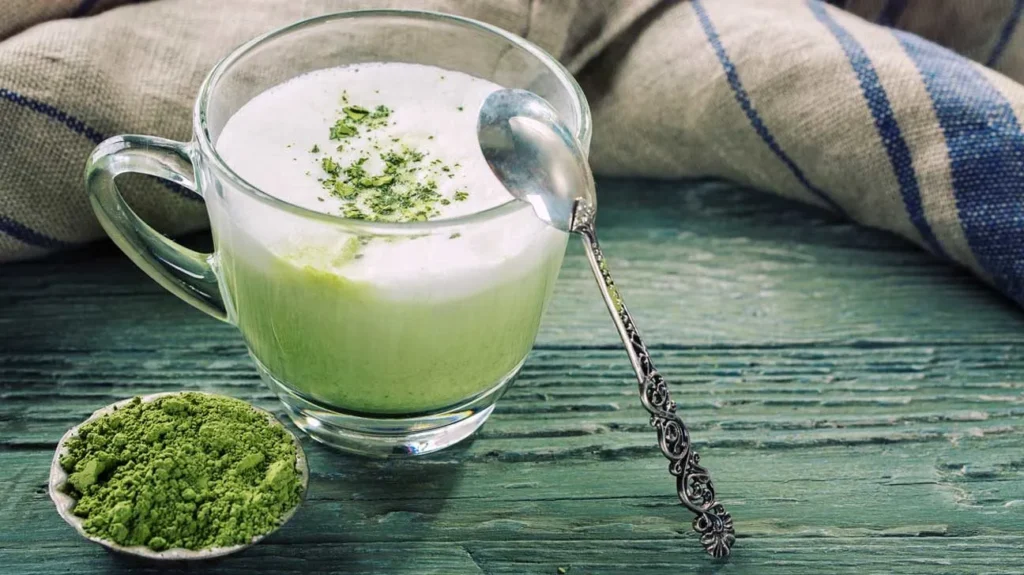Matcha is more than just a beverage; it’s an experience—a superfood that perfectly blends centuries of Japanese tradition with modern health science. Once reserved for intricate tea ceremonies, its vibrant green hue and remarkable benefits have propelled it into a global wellness phenomenon. You’ve likely heard it’s good for you, but what exactly are its benefits? Is it truly that much better than regular green tea? And can it really help with weight loss or improve your skin?
This ultimate guide will take a deep dive into all the science-backed health benefits of matcha powder. We will uncover the secrets to its potent effects, explain the science in simple terms, and answer all your most pressing questions one by one, empowering you to understand why this ancient powder is a modern-day health powerhouse.
Key Takeaways at a Glance
- Astonishing Antioxidant Levels: Matcha contains several times more antioxidants (especially the potent catechin EGCG) than high-quality green tea, effectively fighting cellular damage from free radicals and slowing the aging process.
- Unique “Calm Alertness”: A powerful synergy between caffeine and the amino acid L-Theanine provides hours of smooth, focused energy without the jitters, anxiety, or subsequent crash often associated with coffee.
- Boosts Metabolism: Clinical studies show that key compounds in matcha can help increase the body’s metabolic rate and enhance fat-burning efficiency, making it an ideal partner for weight management.
- More Comprehensive Nutrition: Because you consume the entire tea leaf—not just an infusion—you ingest 100% of its water-soluble and non-water-soluble nutrients, including fiber, vitamins, and minerals.
The Core Question: Why Are Matcha’s Benefits So Powerful?
To understand the profound benefits of matcha, you must first grasp its fundamental differences from regular green tea. The answer lies in two ancient, artful practices that create a product of unparalleled quality.
- Key #1: You Consume the Entire Leaf When you brew a cup of regular green tea, you are only drinking the water-soluble compounds that infuse into the water. The majority of the leaf’s powerful nutrients—including its insoluble fiber, vitamins, and a significant portion of its antioxidants—remain trapped in the leaves, which are then discarded. When you drink matcha, you are consuming the entire, finely powdered tea leaf, suspended in water or milk. This means you receive 100% of the leaf’s complete nutritional essence, making it exponentially more potent.
- Key #2: Shade-Growing Concentrates Nutrients The tea plants (Camellia sinensis) destined to become high-quality matcha are shade-grown for the final three to four weeks before harvest. This unique and crucial cultivation method blocks out up to 90% of direct sunlight, stressing the plant. In response, the leaves produce a massive surge in chlorophyll (giving matcha its vibrant emerald color) and key amino acids, especially L-Teanina. This process not only creates matcha’s signature sweet, savory “umami” flavor but also significantly concentrates the very compounds responsible for its most unique health benefits.
A Deep Dive: The Main Health Benefits of Matcha Powder
The meticulous production process results in a powder packed with bioactive compounds. Here’s what the science says about them.
Benefit 1: An Unparalleled Antioxidant Powerhouse
This is matcha’s most celebrated health benefit. Our bodies are constantly under attack from free radicals—unstable molecules produced by pollution, UV radiation, and even our own metabolism. These molecules cause “oxidative stress,” a process that damages cells, accelerates aging, and contributes to chronic diseases. Antioxidants are our defense.
- The Power of EGCG: Matcha is loaded with a class of potent antioxidants called catechins. The most famous and powerful of these is epigallocatechin gallate (EGCG). Think of EGCG as your body’s elite “cellular bodyguard.” It actively seeks out and neutralizes free radicals, protecting your DNA, proteins, and cells from damage.
- Scientific Proof: The Astonishing Comparison
Case Study: A landmark study published in the Journal of Chromatography A aimed to quantify this difference. Researchers compared the catechin content of matcha to a well-known brand of brewed green tea. The results were staggering: they found that the concentration of available EGCG in matcha was up to 137 times greater than in the steeped green tea. This data powerfully establishes matcha’s superior status as one of the most potent antioxidant sources you can consume.
Benefit 2: The “Calm Alertness” Effect for Enhanced Brain Function
Yes, matcha definitely contains caffeine (typically 30-70 mg per serving). But its energizing effect is entirely different from coffee, thanks to its high concentration of L-Teanina.
- Unlocking the Caffeine & L-Theanine Synergy: This amino acid is matcha’s secret weapon. L-Theanine crosses the blood-brain barrier and works in several ways: it stimulates the production of alpha brain waves, which are associated with a state of relaxed, non-drowsy alertness, and it increases levels of calming neurotransmitters like GABA, serotonin, and dopamine. This creates a perfect synergy with caffeine:
- It slows the body’s absorption of caffeine, leading to a smooth, sustained release of energy over 3-6 hours, avoiding the sharp spike and subsequent crash of coffee.
- It actively counteracts the potential anxiety and jitters that caffeine can cause.
- The Result: Sustained Focus Without the Jitters This unique effect, known as “calm alertness,” allows you to feel mentally sharp, creative, and focused for hours, while your mind remains calm and relaxed. This is precisely why Japanese Zen monks have used matcha for centuries to stay alert yet serene during long periods of meditation.
Benefit 3: Boosts Metabolism and Supports Weight Management
Matcha is a star ingredient in weight management diets, thanks again to its high EGCG content.
- How EGCG Aids in Fat Burning: EGCG has been shown to have thermogenic properties, meaning it can help increase the body’s rate of burning calories. Furthermore, it can enhance fat oxidation, helping the body use fat more efficiently as an energy source, especially during and after exercise.
- What Does the Science Say?
Case Study: A well-known study published in the American Journal of Clinical Nutrition investigated this effect. It found that participants who consumed green tea extract rich in catechins experienced a 17% increase in fat oxidation during moderate exercise compared to a placebo group. While this study used an extract, it reveals the underlying mechanism of the key compound found in abundance in matcha. Incorporating matcha as a daily beverage, combined with a healthy diet and regular exercise, is an effective strategy to support your metabolic health.
Benefit 4: Supports Radiant Skin Health
The saying “beauty comes from within” is perfectly exemplified by matcha.
- How Antioxidants Fight Skin Aging: A significant cause of skin aging is oxidative damage. The massive dose of antioxidants in matcha helps neutralize free radicals from UV rays and pollution, protecting skin cells and vital proteins like collagen and elastin. This helps reduce the appearance of fine lines, wrinkles, and dark spots.
- Anti-inflammatory Action for Clearer Skin: Matcha’s anti-inflammatory properties can help soothe irritated skin and reduce redness. For those with acne-prone skin, EGCG has been shown in studies to reduce sebum (oil) production and inhibit the growth of acne-causing bacteria, helping to keep skin clear and calm.
Benefit 5: May Help Protect the Liver
The liver is a vital organ responsible for flushing out toxins, metabolizing drugs, and processing nutrients. The catechins in matcha appear to offer it protection.
- Scientific Evidence: A comprehensive review of 15 studies, published in the International Journal of Clinical and Experimental Medicine, concluded that drinking green tea was associated with a decreased risk of liver disease. The high concentration of catechins in matcha suggests it may offer even more potent protective effects, helping to shield the liver from damage caused by toxins and inflammation.
The Ultimate Showdown: Matcha Powder vs. Regular Green Tea
When compared side-by-side, the superiority of matcha becomes undeniable. It’s not just a different flavor; it’s in a different league of nutritional potency.
| Comparison Metric | Matcha Powder | Regular Green Tea |
|---|---|---|
| Leaf Consumption | 100% (Whole Leaf) | ~10-20% (Water-Soluble Parts) |
| Antioxidants (EGCG) | Extremely High | Lower |
| L-Teanina | Elevado | Lower |
| Caffeine | Medium-High | Low |
| Fiber & Nutrients | Contains Fiber, Vitamins, Minerals | Trace Amounts |
| Overall Effect | Potent & Comprehensive | Mild & Limited |
Conclusion: Is Matcha Powder Good for You?
The answer, based on compelling scientific evidence, is an overwhelming yes.
Matcha powder is far more than just a trendy beverage. It is a nutritionally dense superfood that provides your body with unparalleled antioxidant protection, a unique and highly effective form of energy and focus, and multi-faceted support for your weight, skin, heart, and liver health. Incorporating a high-quality cup of matcha into your daily routine is undoubtedly a wise and delicious investment in your long-term well-being.
Perguntas frequentes (FAQ)
1. What’s the difference between Ceremonial and Culinary grade matcha?
- Ceremonial Grade: Made from the youngest, most tender tea leaves from the very top of the plant. It has the most vibrant color, finest texture, and a smooth, sweet, umami-rich flavor with no bitterness. It is intended to be whisked with hot water and drunk on its own.
- Culinary Grade: Made from slightly older leaves harvested later. It has a stronger, more robust, and slightly more bitter flavor designed to stand up to other ingredients in lattes, smoothies, or baked goods.
2. Why is high-quality matcha so expensive?
The high price is a direct result of its incredibly labor-intensive production process: the careful shade-growing, the meticulous hand-harvesting of only the best leaves, the de-stemming and de-veining process, and the extremely slow stone-grinding that preserves its delicate flavor and nutrients.
3. How much matcha is safe to drink every day?
For most healthy adults, 1-2 servings (using about 1-2 teaspoons of powder in total) per day is perfectly safe and beneficial. Due to its caffeine content, it’s best enjoyed in the morning or early afternoon to avoid disrupting sleep.
4. Does matcha break a fast?
Technically, yes. Pure matcha prepared with water contains a small number of calories (around 3-5 per serving) and macronutrients, which will break a strict water fast. However, for those practicing intermittent fasting with a more flexible approach (like “dirty fasting”), the caloric impact is minimal and generally considered acceptable as it doesn’t significantly impact insulin levels.
Para mais leituras e pesquisas
To explore the science behind matcha, please consult these authoritative resources:
- Healthline: A trusted health information portal with comprehensive, evidence-based articles.
- PubMed - Biblioteca Nacional de Medicina: The primary database for biomedical literature, where you can find original research papers.
- WebMD: Another reliable source for ingredient information and health benefits.

